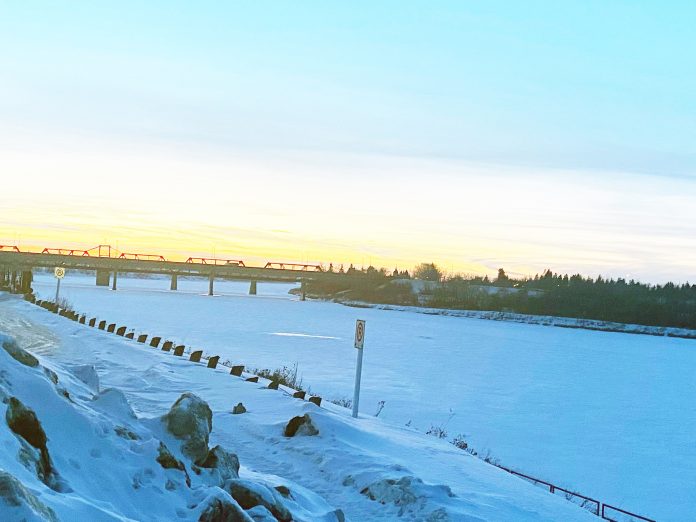
On Wednesday, the Water Security Agency (WSA) released its 2023 preliminary spring runoff outlook for Saskatchewan and based on conditions as of Feb. 1, the Prince Albert area is expected to see near normal runoff.
“Flows on the North Saskatchewan River have ranged from normal to above normal over the winter months,” said a spokesperson for WSA. “The South Saskatchewan River has seen flows into Lake Diefenbaker near historical median, but outlooks at Gardiner Dam have been below normal.”
The WSA said flooding is not expected, despite the predicted above runoff response.
Areas in the northwest part of the province can also expect to see near normal runoff, while the far northeast can expect a slightly below normal runoff.
The spokesperson said this is due to lower-than-normal snowpack, however, peak flows over the province’s northern areas tend to be more dominated by rainfall events.
The preliminary runoff report is based on several factors, including conditions at last fall’s freeze up, accumulated precipitation over the winter, and potential expected further precipitation between now and spring melt.
Later in February, the WSA will be conducting snowpack surveys at sites across Saskatchewan that will give a clearer indication of runoff potential. Once samples are collected and analyzed, the WSA will provide their Spring Runoff Report in early March.
Regular updates will then be provided as the melt gets underway.
“We still have several weeks of winter left and additional precipitation could change the runoff potential, as could the speed of the melt,” said the spokesperson. “At this time, we do not expect to see any signification runoff events anywhere in the province.”
The report also shows a below normal snowmelt runoff potential for most of southern Saskatchewan, as it experienced very dry conditions through the summer and into fall. The exception is an area just east of Moose Jaw through Weyburn, Indian Head, and Regina, where wetter fall conditions and near normal snowfall have projected a near normal snowmelt.
“The melt rate is expected to have a significant impact on runoff yields across the south. With depleted subsoil moisture, a slow melt will likely result in the bulk of the snowpack recharging the soil column. A rapid melt is likely needed to result in an improvement to surface water supplies, as the current snowpack is not sufficient to satisfy both,” said a media release from WSA. “Without additional snowfall, surface water supply issues are likely to occur in southwestern Saskatchewan in 2023.”
With potentially another eight to 10 weeks of winter left, the spring runoff outlook may change.

